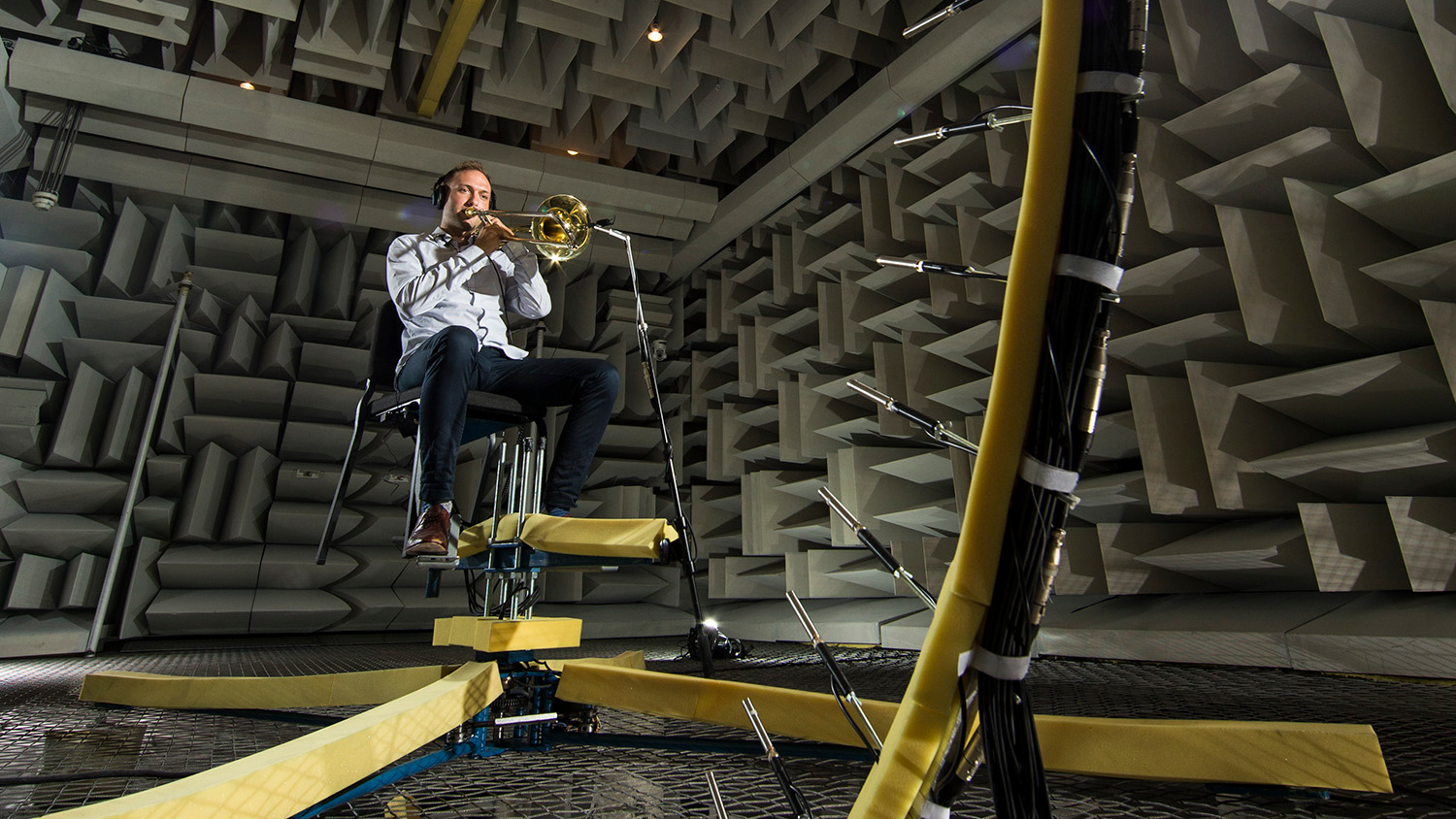This guy is mapping how instruments radiate sound
In 360 degrees

It's been known for centuries that a musical instrument sounds different depending on the direction that you're listening to it from. But Joshua Bodon is hoping to become the first person to map every instrument's sound profile, or 'directionality'.
To do so he's using the 'anechoic' chambers at Brigham Young University in Utah, where sound energy is absorbed by the walls so there are no echoes. In there, he's set up a rotating chair and a semicircular array of 37 microphones.
To gather data, a musician sits in the chair and plays a short chunk of "Somewhere Over the Rainbow", then the chair is rotated five degrees and they do the same thing again. To keep the instrument oriented correctly, it's equipped with a laser that has to stay inside a target that's rotated along with the chair.
Bridging science and art
From the microphone data, a three-dimensional 'balloon plot' is then created that shows visually how sound radiates from an instrument. So far the team has mapped the cello, violin, trombone, French horn, baritone sax, oboe, bassoon, clarinet, viola and trumpet.
The goal? To improve sound quality by helping audio engineers perfect recording methods and design better studio and concert halls, as well as helping musicians understand their instruments. It could even help conductors to rearrange their orchestras based on what will sound best for the audience.
"This is bridging science and art," Leishman said of the research. "We're giving these professionals scientific data to help them make better decisions. That is the vision."
Image credit: Mark Philbrick/BYU
Sign up for breaking news, reviews, opinion, top tech deals, and more.
